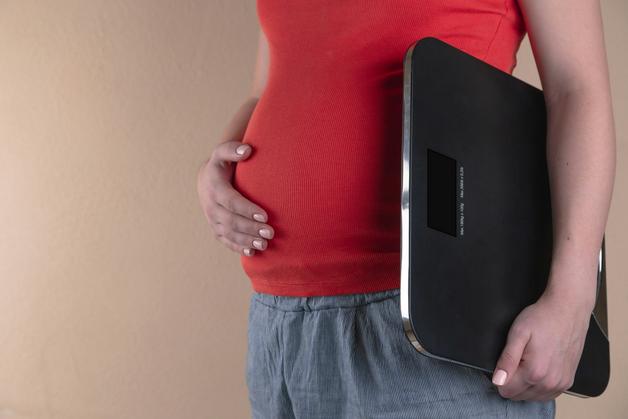The journey towards childbirth often stirs a whirlwind of anticipation, questions, and even a pinch of worry. You might wonder: Will I be ready when labour begins? Can these intense sensations truly be managed, or will the experience sweep me away? For many parents, uncertainty around delivery—vaginal or surgical, at hospital or at home—can weave a tapestry of both excitement and apprehension. Here enters the concept of birth preparation techniques: a medley of scientifically-informed, carefully honed approaches designed to support you physically, emotionally, and mentally as you set out on this path. Imagine a toolkit, brimming with resources ranging from breathing practices and mindful movement to concrete, hands-on measures for comfort, all with one goal—help you approach birth with confidence and informed choice. What solutions stand out? How do these techniques translate to real-life benefits? Which methods fit seamlessly into the rhythm of your daily life, and how to adapt them if your plan needs to pivot unexpectedly? Let’s explore essential points: the evolution and diversity of birth preparation techniques, their tangible advantages, clear guides for practice, and the supporting role of nutrition, sleep, and support networks.
What are birth preparation techniques and why can they help every parent?
Simply put, birth preparation techniques blend education, bodywork, and mental conditioning to prime you for the demands of labour and the surprises of parenthood. Whether you envision a medicated or non-medicated birth, these practices—rooted in science and tradition—are about equipping you for comfort, adaptability, and empowerment. Wondering if breathwork genuinely helps with contractions? Or if partner-involved preparation really changes outcomes? Modern studies highlight how both physical exercise and psychological strategies substantially reduce distress, improve coping, and may even lower the rate of interventions such as emergency caesarean. By understanding your options and training your body, you invite self-advocacy and synergy with your care team, ultimately fostering a sense of reassurance.
Historical evolution and contemporary forms: A dynamic landscape
Centuries ago, childbirth thrived on collective wisdom—families, midwives, and rituals centered around support and instinct. With the advance of medical science, birth shifted to hospitals, privileging safety but sometimes veering towards protocol over person. The arrival of Lamaze, the Bradley Method, and more recently, mindfulness-based approaches, answered this with patient-centred alternatives—teaching parents not just what to expect, but how to participate. Today, you’ll find a spectrum of birth preparation techniques: from prenatal yoga and Kegel exercises to childbirth classes and doula support, providing avenues to tailor preparation uniquely.
The science and experience: Tangible gains for parents and families
Sceptical about stretching or meditative breathing? Research points out that physical preparation often reduces the risk of complications and can lower perceived pain thresholds. For example, deep breathing and visualisation exercises activate the parasympathetic nervous system, which helps shift the body from panic to calm during labour. Partner-involved techniques strengthen emotional bonds, and education fuels confidence. The result? A positive, more collaborative birth experience, benefiting both birthing parent and newborn.
The palette of birth preparation techniques: Physical, mental, educational, and more
Relaxation-centric approaches
- Sophrology: Think of this as a mix of gentle movement and controlled breathing, guiding the mind and body to a place of deep relaxation. With regular practice during pregnancy, sophrology builds a toolkit—inner calm, manageable pain perception, and faster recovery.
- Hypnosis and hypnobirthing: Here, guided instructions usher you into a trance-like calm. Studies suggest regular hypnobirthing can reduce fear, ease physical symptoms, and bestow a sense of agency over pain.
- Prenatal singing: Not just for melody lovers—these gentle vocal techniques help soothe nerves and facilitate a connection with the baby. The sound vibrations can aid relaxation and possibly soften pain perception.
Touch, movement, and body-based modalities
- Haptonomy: This practice uses touch, caresses, and targeted abdominal movement—usually involving the partner—to foster bonding. While not a direct pain relief method, it amplifies comfort and shared experience.
- Prenatal yoga: With each stretch, twist, and pause, muscles strengthen and relax in tandem. Prenatal yoga’s benefits are wide-reaching: improved flexibility, optimal fetal positioning, relief from back pain, and a calmer mindset.
- Pilates & physical exercises: Core and pelvic stability, better posture, and strong body awareness are key results. Imagine moving through labour requiring stamina; here’s where squats, pelvic tilts, and birthing balls (plus Kegel exercises for pelvic health) shine.
- Aquatic movement: Prenatal swimming or relaxed movement in birthing pools leverages water’s buoyancy for joint relief and easier mobility, particularly for those with swelling or discomfort.
- Manual therapies: From osteopathy to shiatsu and reflexology, these gentle touch therapies can relieve musculoskeletal tension. For example, osteopathy addresses functional imbalances, aiding smoother adaptation to labour’s physical demands.
Knowledge, empowerment, and supportive resources
- Childbirth classes: Consider these your crash course: real-time discussions, pain management demonstrations, and myth-busting rundowns on topics like caesarean, vacuum extraction, or newborn feeding. Evidence highlights that access to structured information lowers anxiety and clarifies expectations.
- Partner/family involvement: Whether through massage, words of encouragement, or advocacy, loved ones play a pivotal role. Doulas, peer support, and extended family widen the safety net.
- Birth plan drafting: Mapping preferences on interventions, comfort strategies, or desired support with your care provider encourages respectful, personalised care.
- Educational resources: Books, videos, and remote sessions offer flexibility—absorb the details at your pace, revisit as needed, and stay updated.
Mindfulness and mental health strategies
- Mindfulness and meditation: Simple body scans, breath-focused concentration, and visual imagery have been shown to reduce pain scores and length of labour in some studies. Practising daily encourages resilience and peace.
- Affirmations: Repeating mantras like “I am strong and capable” slowly builds positive self-expectation—especially valuable if past experiences have planted fear or doubt.
- Emotional support: Honest conversations, counselling, or moderated discussion groups provide validation for emotional hurdles that might arise during pregnancy or in the face of previous birth trauma.
Holistic and alternative practices
- Aromatherapy: With scents like lavender or chamomile, relaxation often comes naturally. Remember, always consult a care provider before using essential oils in pregnancy.
- Acupuncture & auriculotherapy: Elements of traditional Chinese medicine, these methods may help promote cervical readiness, fetal descent, or comfort in case of breech—provided by qualified practitioners, their use should always be discussed with your obstetrician.
- Other modalities: Reflexology, Alexander Technique, and herbal remedies (think red raspberry leaf tea) receive mixed evidence but are popular in many wellness circles. Discuss with your doctor to weigh the options and ensure safety.
Nutrition, hydration, and restorative habits
- Balanced nutrition: Lean protein, colourful fruits and vegetables, whole grains, and healthy fats give the energy and micronutrients your body and baby need.
- Prenatal vitamins: Folic acid, iron, and omega-3s play direct roles in healthy neural and physical development—regular checks with your provider will help select the best supplements.
- Hydration: Adequate water intake—boosted by coconut water or clear soups—stabilizes blood volume, keeps energy levels high, and can prevent muscle fatigue in labour.
- Restorative sleep: Hormonal balance, immune function, and emotional health all hinge on sound sleep. Establishing a pre-bedtime routine can ease you into rest and bolster resilience.
Embedding birth preparation techniques into daily routines
Birth preparation is not about grand leaps, but about steady, day-to-day progress. Schedule short but regular sessions of movement, mindfulness, or journaling to register both tangible and emotional milestones. Mix and match techniques; maybe pair a stretch with focused breathwork or a walk with gentle mental rehearsal. Over time, practice transforms theory into instinct.
Facing setbacks and adapting plans
Even the best-prepared journey sometimes takes an unexpected turn. What happens if labour progresses suddenly, or pain relief isn’t enough? A flexible mindset, coupled with robust emotional support from partners or doulas, can transform challenges into moments of growth. Recognising and applauding small victories, like mastering a new posture or articulating needs at the hospital, builds trust—within yourself and with your birth team.
Preparing for all birthing scenarios
- Vaginal birth: Prioritise upright movement, breathing patterns, and labour positions that facilitate an easier transition. Understanding birth’s stages reduces surprises.
- Cesarean birth: Information is powerful—know what the procedure involves, when it is the optimal choice, and steps for a smooth recovery.
- Flexibility: Sometimes plans get re-written. All birth preparation techniques, at their core, promote adaptability and informed calm—whether for a home birth’s intimacy or a hospital’s technological reassurance.
Creating and nurturing support networks
No preparation is truly complete without a collaborative team. Obstetricians, midwives, doulas, and birth educators, when chosen with care, foster an environment of trust and reassurance. Community resources—childbirth classes, support circles, and online forums—offer both companionship and solid information, which can make all the difference in moments of uncertainty.
Beyond birth: How preparation shapes postpartum recovery
The ripple effects of birth preparation techniques extend well past the delivery room. Physically, a body strengthened by targeted exercise and pelvic floor routines supports smoother recovery. Mentally, the knowledge and self-care practices built during preparation become invaluable assets as you adjust to early parenthood. Take time to reflect—whether celebrating the expected or processing the surprising—and remember that the journey to confident parenting is a process, not a finish line.
Key takeaways
- Birth preparation techniques span movement, mindset, education, and robust support—together, they build a strong foundation for labour and early parenting.
- Pain relief through targeted breathing, exercise, and hands-on modalities is supported by clinical evidence.
- Partner and community involvement strengthens emotional wellbeing and shared experience.
- No single path suits all: flexibility and regular, gentle practice ensure preparation stays relevant and effective.
- Tracking progress and gently readjusting routines supports both confidence and resilience.
- There’s a wealth of support available—both from local experts and dedicated mobile resources like the Heloa app, where customised advice and free health checklists for children can enhance your journey.
Questions Parents Ask
What is the best time to start practicing birth preparation techniques?
Usually, around 28th to 32nd week of pregnancy is considered an ideal window to begin. This timeframe offers space to develop habits—like deep breathing or mindful movement—without pressure. If you’re earlier or even a bit late in starting, no worries; the body and mind remain adaptable, and every practice counts, no matter when you begin.
Are birth preparation techniques only for natural childbirth?
Absolutely not. While some practices—such as gentle yoga, relaxation, or visualisation—are frequently linked to unmedicated births, all forms of labour (including those that involve medication or caesarean delivery) can benefit from a well-rounded birth preparation plan. Think of these techniques as universal—tailored for relief, recovery, and adaptability wherever your path leads.
Can I use birth preparation techniques at home, or is class attendance necessary?
Many birth preparation techniques lend themselves beautifully to home practice. Breathing routines, visualisation, mindful movement, and posture work can usually be self-taught or guided by online resources. Still, interactive classes—whether virtual or in person—dedicate time for questions and foster a sense of solidarity with other parents. The choice is yours; both approaches hold merit.
Further reading:









